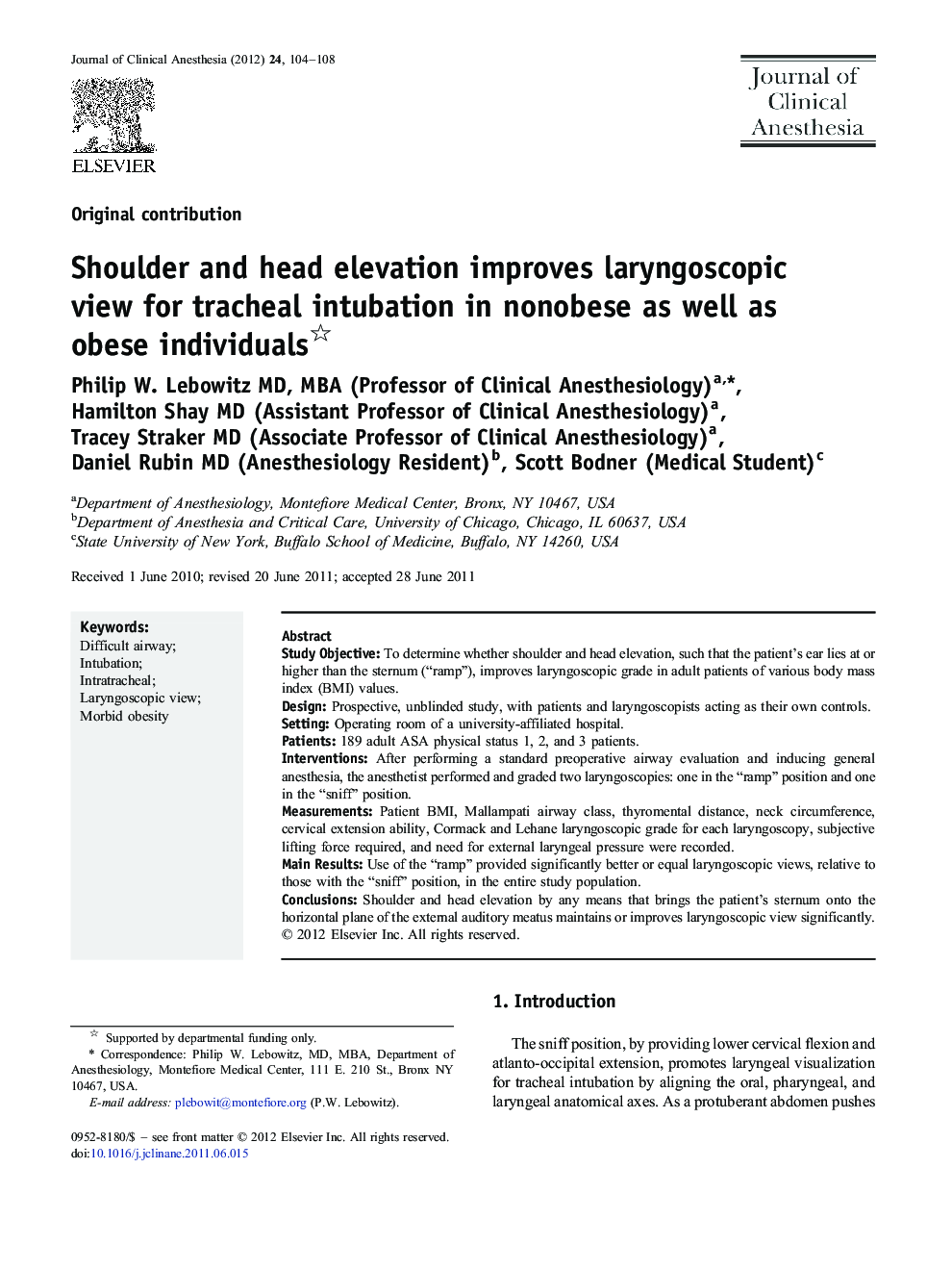| Article ID | Journal | Published Year | Pages | File Type |
|---|---|---|---|---|
| 2763145 | Journal of Clinical Anesthesia | 2012 | 5 Pages |
Study ObjectiveTo determine whether shoulder and head elevation, such that the patient's ear lies at or higher than the sternum (“ramp”), improves laryngoscopic grade in adult patients of various body mass index (BMI) values.DesignProspective, unblinded study, with patients and laryngoscopists acting as their own controls.SettingOperating room of a university-affiliated hospital.Patients189 adult ASA physical status 1, 2, and 3 patients.InterventionsAfter performing a standard preoperative airway evaluation and inducing general anesthesia, the anesthetist performed and graded two laryngoscopies: one in the “ramp” position and one in the “sniff” position.MeasurementsPatient BMI, Mallampati airway class, thyromental distance, neck circumference, cervical extension ability, Cormack and Lehane laryngoscopic grade for each laryngoscopy, subjective lifting force required, and need for external laryngeal pressure were recorded.Main ResultsUse of the “ramp” provided significantly better or equal laryngoscopic views, relative to those with the “sniff” position, in the entire study population.ConclusionsShoulder and head elevation by any means that brings the patient's sternum onto the horizontal plane of the external auditory meatus maintains or improves laryngoscopic view significantly.
